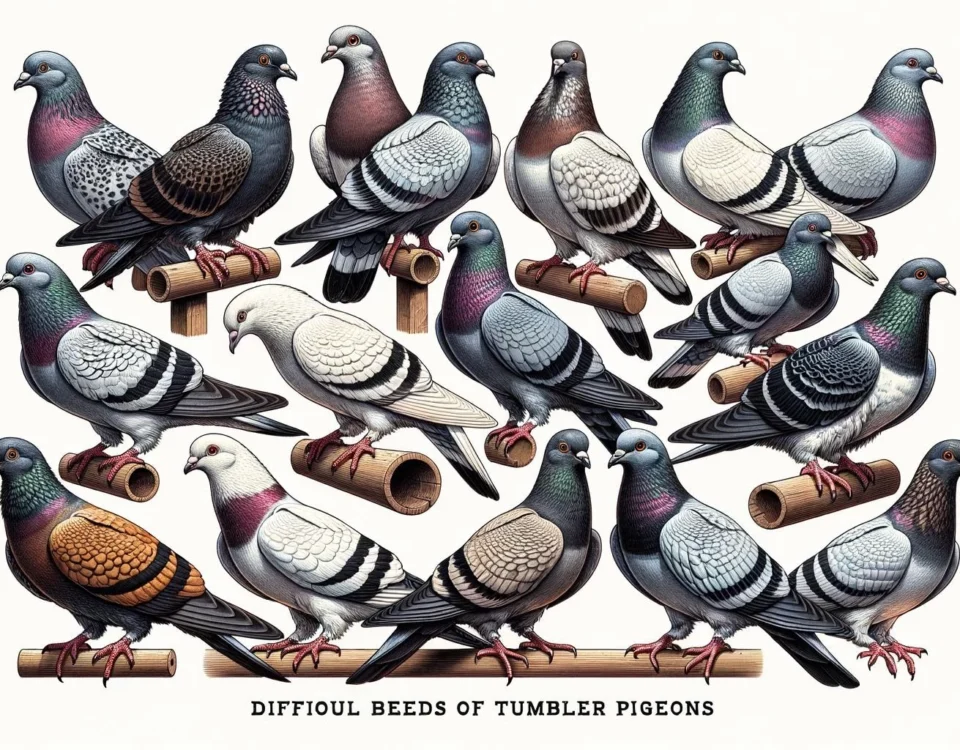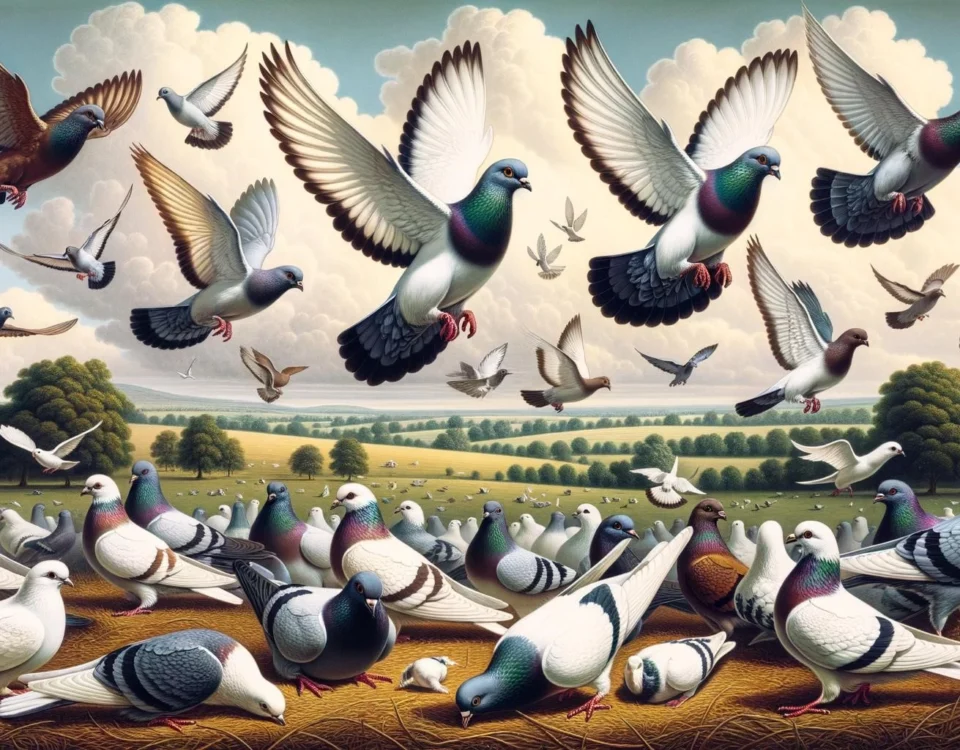Known for their remarkable aerial acrobatics, Tumbler pigeons captivate with their unique ability to roll and tumble mid-flight. These fascinating creatures come in a wide variety of breeds, each boasting distinct physical characteristics and flight patterns. Not merely a spectacle, their tumbling serves various purposes from evading predators to communication, making them a fascinating study in animal behavior. Let’s explore the world of these extraordinary birds, their origins, and the reasons behind their distinctive tumbling behavior.
Key Takeaways
- Tumbler pigeons are a variety of fancy pigeons known for their aerial acrobatics, rolling, and tumbling in mid-air.
- There are roughly 17 different types of tumbler pigeon breeds that originate from various regions around the world.
- Tumbler pigeons engage in tumbling behavior for various reasons, including evading predators, expressing excitement, and as a form of communication.
Physical Appearance and Flight Behavior
Tumbler pigeons are known for their unique flying behavior, characterized by tumbling or somersaulting during flight. They have been specifically bred to exhibit intermittent episodes of tumbling in mid-air.
The physical appearance of tumbler pigeons varies depending on the breed. Some breeds have a long face and narrow body, while others have a broad head and a wider beak. The size and weight also differ among different tumbler breeds.
When flying, tumbler pigeons show their acrobatic abilities by performing backward somersaults or tumbling in the air. This behavior is distinctive to tumbler pigeons and sets them apart from other pigeon breeds.
Origins and Breed Varieties
Tumbler pigeons have been bred and admired for centuries in different parts of the world. The exact origins of these breeds may vary, but they are believed to have originated in regions such as Asia, Europe, and America.
Some popular tumbler pigeon breeds include the Turkish Tumbler, English Bald Head Tumbler, Armenian Tumbler, Berlin Long-Faced Tumbler, Budapest Short-Faced Tumbler, and more. Each breed has its own unique characteristics, flight patterns, and physical appearances.
These breeds are often bred for their flying abilities, exhibition purposes, or simply as pets. Some breeds are known for their high-flying powers, while others perform specific aerial acrobatics.
Reasons for Tumbling Behavior
Tumbling behavior in tumbler pigeons serves multiple purposes. Here are a few reasons why tumbler pigeon breeds engage in tumbling behavior:
- Escaping Predators: Tumbling is often observed as a defensive mechanism to confuse and evade flying predators such as falcons. The sudden change in flight patterns and acrobatic maneuvers can make it difficult for predators to capture them.
- Excitement and Communication: Tumbling can also be a way for tumbler pigeons to express excitement or communicate with other pigeons. It is believed to be a form of social interaction and can signal various emotions or intents.
- Genetic Behavior: Tumbling behavior is believed to be a genetic trait in tumbler pigeons. It is an innate behavior that comes naturally to certain breeds due to their DNA makeup. This behavior is thought to be both instinctual and a form of enjoyment for the pigeons.
It is important to note that while tumbler pigeons exhibit tumbling behavior, they are still capable of normal flight and other pigeon behaviors. The tumbling behavior is specific to certain breeds and does not hinder their overall health or well-being.









